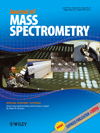
JOURNAL OF MASS SPECTROMETRY
Scope & Guideline
Navigating the Complexities of Mass Spectrometry
Introduction
Aims and Scopes
- Mass Spectrometry Methodology Development:
The journal emphasizes the development of new mass spectrometry methodologies, including novel ionization techniques, mass analyzers, and sample preparation methods. - Application of Mass Spectrometry in Biological Sciences:
A significant focus is placed on the application of mass spectrometry in biological research, particularly in proteomics, metabolomics, and the characterization of biomolecules. - Environmental and Food Safety Analysis:
Research related to the application of mass spectrometry for environmental monitoring and food safety analysis is also a core area, highlighting its role in detecting contaminants and toxins. - Pharmaceutical and Clinical Applications:
The journal publishes studies that involve the use of mass spectrometry for drug analysis, pharmacokinetics, and the development of bioanalytical methods for clinical applications. - Theoretical and Computational Studies in Mass Spectrometry:
There is a consistent focus on the theoretical aspects of mass spectrometry, including computational models and simulations that enhance the understanding of mass spectrometric behavior.
Trending and Emerging
- Metabolomics and Biomarker Discovery:
There is a rising trend in the application of mass spectrometry for metabolomics studies, particularly in the discovery of biomarkers for diseases such as cancer, which underscores its importance in personalized medicine. - Advanced Instrumentation and Technique Integration:
Recent papers highlight innovations in mass spectrometry instrumentation and the integration of techniques such as ion mobility spectrometry, which are becoming increasingly relevant for complex sample analysis. - Environmental Monitoring and Analysis:
Publications focusing on the use of mass spectrometry for environmental monitoring, including air quality and contaminant detection in food, are gaining traction, reflecting a growing concern for environmental health. - Teaching and Educational Methods in Mass Spectrometry:
There is an emerging interest in the pedagogical approaches to teaching mass spectrometry, as evidenced by recent publications aimed at improving educational practices and accessibility in this scientific field. - Drug Development and Pharmacokinetics:
Research concerning drug analysis and pharmacokinetic studies using mass spectrometry is becoming increasingly prominent, particularly in the context of new drug development and regulatory requirements.
Declining or Waning
- Basic Ion Chemistry Studies:
Research focused on fundamental ion chemistry and simplistic ionization methods has decreased, possibly due to the rise of more complex and advanced methodologies that have overshadowed basic studies. - Traditional Gas Chromatography Applications:
The frequency of traditional gas chromatography applications, particularly those not combined with mass spectrometry, appears to be waning as integrated methodologies become more prevalent. - Non-Mass Spectrometry Techniques:
There seems to be a reduction in studies solely based on techniques that do not incorporate mass spectrometry, as the field increasingly emphasizes the integration of mass spectrometry with other analytical techniques.
Similar Journals
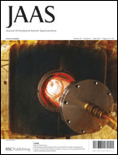
JOURNAL OF ANALYTICAL ATOMIC SPECTROMETRY
Elevating Standards in Atomic Spectrometry Research.JOURNAL OF ANALYTICAL ATOMIC SPECTROMETRY, published by the esteemed Royal Society of Chemistry, stands as a vital resource in the fields of Analytical Chemistry and Spectroscopy. Since its inception in 1971, this journal has been committed to disseminating cutting-edge research, offering an invaluable platform for the presentation of quantitative and qualitative analytical methods. With an impressive impact factor and a current classification in the Q2 category of both Analytical Chemistry and Spectroscopy, it significantly contributes to the advancement of knowledge in these disciplines. Researchers, professionals, and students looking to deepen their understanding of atomic spectrometry will find a wealth of innovative studies, reviews, and methodological papers that consistently push the boundaries of traditional and emerging analytical techniques. Although not an open-access journal, it provides accessible options that facilitate the engagement of a broad academic audience, ensuring that vital research is not confined solely to institutional repositories. The journal's exceptional standing, demonstrated by its strong Scopus rankings, further underscores its critical role in the scholarly communication landscape.
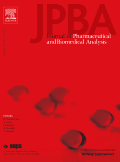
Journal of Pharmaceutical and Biomedical Analysis
Transforming analytical techniques into biomedical breakthroughs.The Journal of Pharmaceutical and Biomedical Analysis, published by ELSEVIER and available in print and online formats, stands as a pivotal source of knowledge in the realms of Analytical Chemistry, Clinical Biochemistry, Drug Discovery, and Pharmaceutical Science. With an ISSN of 0731-7085 and an e-ISSN of 1873-264X, this journal is dedicated to publishing high-quality research that advances the understanding and development of analytical techniques in pharmaceuticals and biomedicine. The journal has earned a solid reputation, reflected in its Q2 category rankings across five distinct fields for 2023, and boasts impressive Scopus rankings, signaling its robust impact within the academic community. The Journal of Pharmaceutical and Biomedical Analysis serves as an essential resource for researchers, professionals, and students alike, providing actionable insights and fostering innovation that can directly influence future advancements in drug development and biomedical applications.

Proteomes
Advancing Knowledge in Biochemistry and Beyond.Proteomes, published by MDPI since 2013, is a notable open access journal that occupies a critical place in the realms of Biochemistry, Clinical Biochemistry, Molecular Biology, and Structural Biology. Based in Switzerland, this journal not only promotes the dissemination of high-quality research pertaining to protein structures and functions but also emphasizes interdisciplinary approaches that bridge various fields of biomedical science. With a Category Quartile ranking of Q2 across multiple pertinent categories in 2023, Proteomes boasts a competitive impact within the scientific community, evidenced by its robust Scopus rankings. Researchers, professionals, and students are invited to explore a wealth of pioneering studies and reviews that are made freely accessible, aligning with global trends in open scientific communication. Whether contributing original research or seeking to expand their knowledge, the journal serves as an invaluable resource for anyone engaged in the evolving landscape of proteomics.

Analytical Science and Technology
Unveiling new horizons in analytical methodologies and applications.Analytical Science and Technology is a prominent journal dedicated to advancing the fields of analytical chemistry and technology, published by the Korean Society for Analytical Science. Based in South Korea, this journal serves as a vital platform for researchers, professionals, and students committed to exploring innovative analytical techniques and methodologies. Although it is classified under Q4 in various subject categories, including Agronomy and Crop Science, Environmental Chemistry, and Pharmacology, the journal aims to provide critical insights and contributions to the scientific community. With ISSN 1225-0163 and E-ISSN 2288-8985, it spans a converged timeline from 2019 to 2024. Despite its current standings in Scopus rankings, the journal is dedicated to improving its visibility and impact through rigorous peer review and high-quality publications, fostering knowledge sharing within its diverse academic fields. Researchers looking for a reliable outlet for their findings are encouraged to consider this journal as it continues to strive for excellence in analytical science.
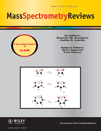
MASS SPECTROMETRY REVIEWS
Elevating Standards in Spectroscopic AnalysisMASS SPECTROMETRY REVIEWS, published by Wiley, is a premier academic journal dedicated to advancing the field of mass spectrometry and its applications across a multitude of scientific disciplines. With an ISSN of 0277-7037 and an E-ISSN of 1098-2787, the journal has established itself as a vital resource within the realms of Analytical Chemistry, Biochemistry, Genetics, Condensed Matter Physics, and Spectroscopy, achieving Q1 status across these categories in 2023. As a testament to its significant contribution to scholarly research, it boasts impressive Scopus rankings, including a rank of #2 out of 76 in Chemistry - Spectroscopy and #4 out of 156 in Chemistry - Analytical Chemistry, placing it in the 97th percentile and above. Emphasizing high-quality, peer-reviewed research, MASS SPECTROMETRY REVIEWS serves as an essential platform for researchers, professionals, and students aiming to stay abreast of cutting-edge developments and methodologies in mass spectrometry. The journal is committed to fostering a deeper understanding of mass spectrometric techniques while also contributing to interdisciplinary advancements, making it a valuable addition to any academic library. Authors seeking to disseminate their work in a journal with a strong reputation and impact in the scientific community will find MASS SPECTROMETRY REVIEWS an ideal venue.

ANALYTICAL AND BIOANALYTICAL CHEMISTRY
Advancing the Frontiers of Chemical AnalysisANALYTICAL AND BIOANALYTICAL CHEMISTRY, published by SPRINGER HEIDELBERG, is a leading international journal that serves as a vital platform for innovative research in the fields of analytical and bioanalytical chemistry. With an impressive impact factor and ranking in the Q2 category for both Analytical Chemistry and Biochemistry, the journal highlights key advancements and methodologies that drive the discipline forward. Established in 1996 and continuing vigorously into 2024, it has gained significant recognition with Scopus rankings placing it in the 83rd and 78th percentiles within its categories, underscoring its impact and relevance. The journal's commitment to open access facilitates widespread dissemination of critical scientific knowledge, making it an essential resource for researchers, professionals, and students dedicated to exploring the complexities of chemical analysis. With its base in Heidelberg, Germany, ANALYTICAL AND BIOANALYTICAL CHEMISTRY continues to inspire and influence the global research community.

EUROPEAN JOURNAL OF MASS SPECTROMETRY
Advancing the Science of Mass SpectrometryEuropean Journal of Mass Spectrometry, published by SAGE Publications Ltd, is a premier academic journal dedicated to advancing the field of mass spectrometry and its applications in atomic, molecular physics, and medical sciences. With an ISSN of 1469-0667 and an E-ISSN of 1751-6838, this journal serves as a vital platform for disseminating innovative research findings and methodologies that enhance our understanding of complex molecular structures and interactions. Operating from the United Kingdom, it has established itself within the academia by achieving a Q3 ranking in several categories, including Atomic and Molecular Physics and Spectroscopy, as per the 2023 category quartiles. Researchers and professionals can access a diverse range of articles that not only address theoretical aspects but also practical applications in various scientific disciplines. As the field continues to evolve, the European Journal of Mass Spectrometry plays a crucial role in fostering collaboration and knowledge sharing among experts, making it an indispensable resource for anyone invested in mass spectrometry and its interdisciplinary connections.
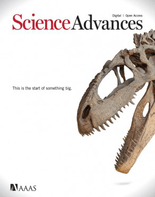
Science Advances
Elevating Research, Empowering MindsScience Advances, published by the American Association for the Advancement of Science, is a leading open-access journal in the field of multidisciplinary sciences. Since its inception in 2015, it has rapidly gained prominence, achieving a remarkable Q1 ranking in both Medicine (miscellaneous) and Multidisciplinary categories, underlining its impact and relevance in contemporary research. With an impressive Scopus ranking of #7 out of 171 in the Multidisciplinary field, it proudly sits in the 96th percentile, showcasing its dedication to disseminating high-quality research across various scientific domains. This journal not only provides open access to innovative findings but also aims to foster collaboration and maintain a high standard of scholarly communication among researchers, professionals, and students globally. Stay updated with some of the most groundbreaking advancements and contribute to the collective pursuit of scientific knowledge through Science Advances.
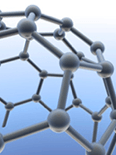
Annual Review of Analytical Chemistry
Exploring the Depths of Analytical TechniquesAnnual Review of Analytical Chemistry, published by Annual Reviews, is a premier journal that serves as a critical resource in the field of analytical chemistry, providing comprehensive and cutting-edge reviews that synthesize recent advancements and pivotal research findings. With an impressive impact factor and ranked Q1 in both Analytical Chemistry and Miscellaneous Medicine, it stands as a leader in disseminating knowledge that spans the intricacies of chemical analysis, enhancing the scientific discourse within the community. Available in both print (ISSN: 1936-1327) and online (E-ISSN: 1936-1335), the journal is accessible to a wide audience, fostering innovation and collaboration among researchers, professionals, and students alike. Its scope includes the converged years from 2008 to 2024, showcasing its commitment to providing relevant and timely insights that impact practice and education in analytical techniques, methodologies, and applications. The Scopus rank of #6 out of 156 in Analytical Chemistry, placing it in the 96th percentile, underscores its significance and the high regard in which it is held. As you explore the journal's offerings, you will find a wealth of knowledge that not only informs but inspires future discoveries in the realm of analytical chemistry.

CRITICAL REVIEWS IN ANALYTICAL CHEMISTRY
Innovating Insights for Tomorrow's Analytical Challenges.Critical Reviews in Analytical Chemistry, published by Taylor & Francis Inc, stands as a pivotal journal in the field of analytical chemistry, contributing significantly to its advancement since its inception in 1989. With an impressive Q1 ranking in the 2023 analytical chemistry category, it positions itself among the top 15 journals in the field, reflecting its high impact and relevance, as evidenced by a 90th percentile Scopus rank. This esteemed journal is dedicated to publishing comprehensive reviews that synthesize current research and emerging methods in analytical techniques, making it an invaluable resource for researchers, professionals, and students alike. With the goal of fostering innovation and collaboration, Critical Reviews in Analytical Chemistry continues to address challenges and breakthroughs within the sphere of analytical methodologies, ensuring its authors and readers remain at the forefront of scientific discovery.